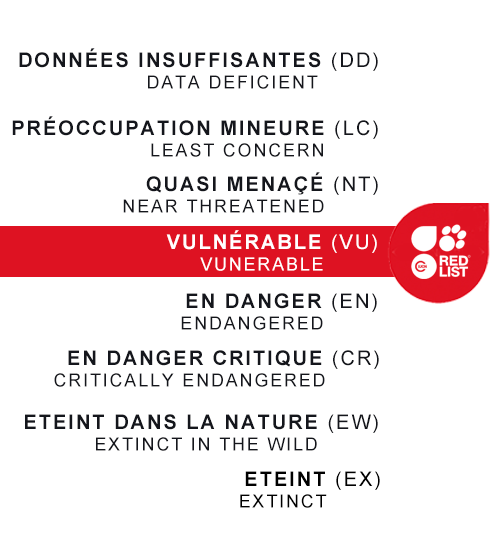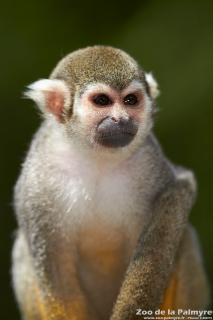Common Squirrel Monkey

Common Squirrel Monkey

-
Class
Mammalia -
Order
Primates -
Familly
Cebidae
-
 25–37cm
25–37cm -
 ♂ 550–1,400g, ♀ 550–1,200g
♂ 550–1,400g, ♀ 550–1,200g -
 5 months
5 months -
 1
1 -
 20 years
20 years
-
Diet
omnivorous (insects, fruit, flowers, gum, small vertebrates, eggs...) -
Habitat
tropical forests -
Range
South America (Brazil, Guyana) -
 This species is part of a European Breeding Program
This species is part of a European Breeding Program
-
Population in the wild
En diminution -
IUCN REDLIST status


Common Squirrel Monkeys are so called because of their long tails. These are not prehensile but they can support the weight of a young squirrel.
Common Squirrel Monkeys live in large groups of several males and females. Both sexes urinate lightly on their hands then rub them vigorously on the soles of their feet. This behaviour, called ‘urine washing’, is an olfactory means of communication: the urine, which contains sexual steroids, transmits information about the animal’s social and reproductive status.
Common Squirrel Monkeys are especially noisy when moving around and have about 20 different vocalisations: purrs, tweets, peeps, strident cries...
Females share the carrying and care of the young. This alloparenting allows young females to acquire mothering skills.
There are 7 species of Squirrel Monkey. Though too small to be hunted for their meat, they are sometimes trapped to be sold as pets. But given its significant geographic distribution and relative adaptability to degraded forests, the species is not endangered in the short term.






